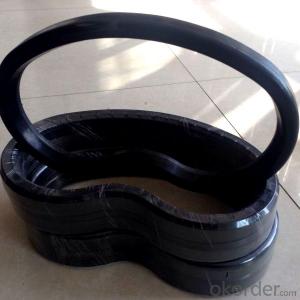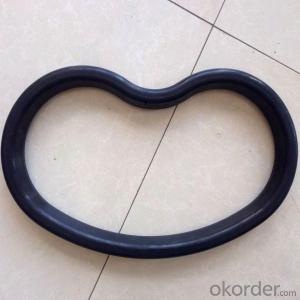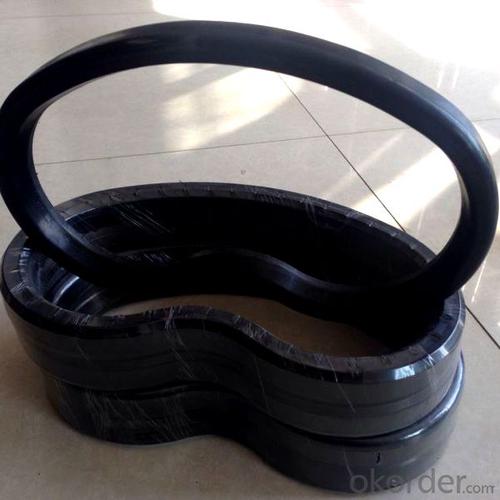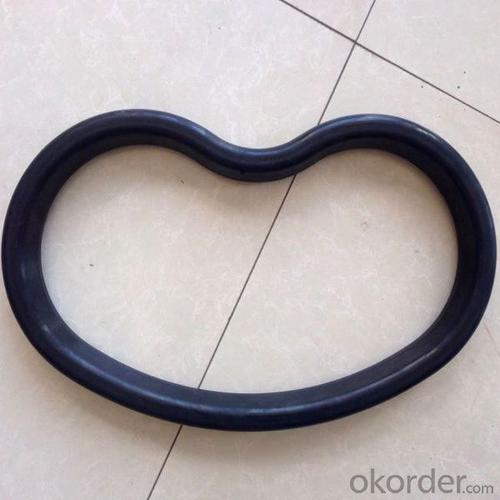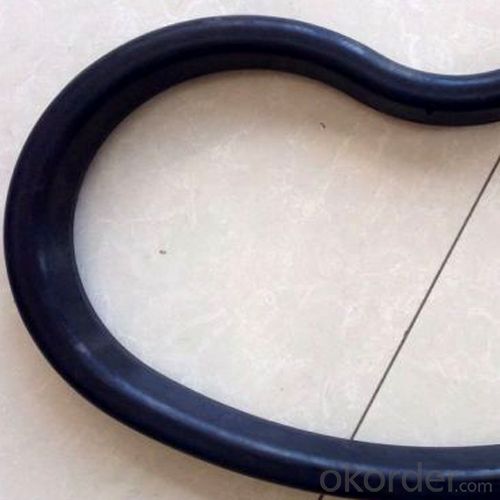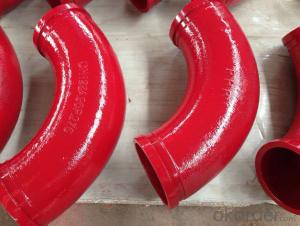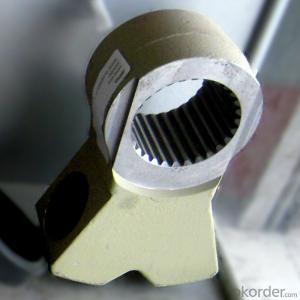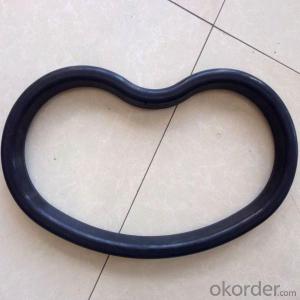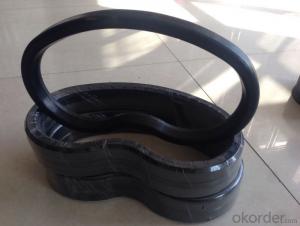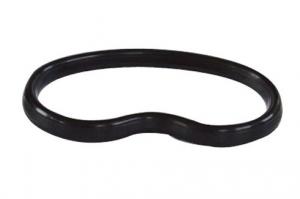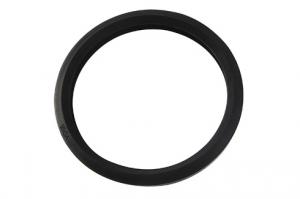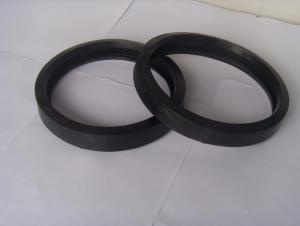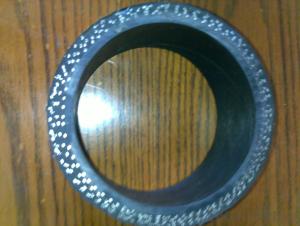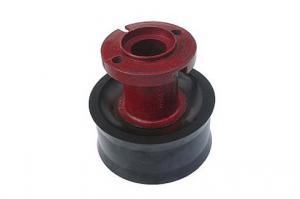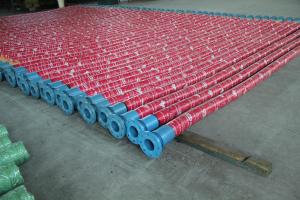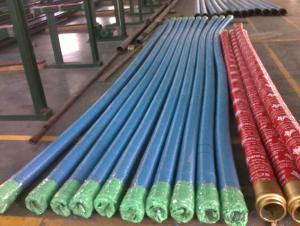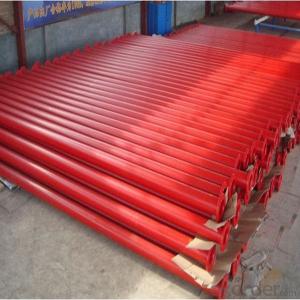Spare Parts For Concrete Pumps Rubber Kidney Seal Dn180
- Loading Port:
- Tianjin
- Payment Terms:
- TT OR LC
- Min Order Qty:
- 10 pc
- Supply Capability:
- 10000 pc/month
OKorder Service Pledge
OKorder Financial Service
You Might Also Like
Product Description:
Spare Parts For Concrete Pumps Rubber Kidney Seal Dn180 normally made by special rubber materials, NR rubber and other rubbers
to make sure the quanlity of seals , and also package in plywood box or cartons and put into container, it has a good performance and our customer are very happy with our Rubber Kidney Seal in past decade.
Scope of Application of the Goods
Spare Parts For Concrete Pumps Rubber Kidney Seal Dn180 is a concrete pumps parts for combined use with other concrete parts in for Schwing concrete pumps and truck pumps.
This seals can only be used in Schwing type concrete pumps and truck pumps as well, but not in any other pumps.
Product Advantages:
OKorder's Concrete Pumps Spare Parts Kidney Seal DN 180 Channels are durable, strong, and safety.
Specifications:
CNBM No.
3000031
Original No.
10140087
Description
Kidney Seal DN 180
Remark
FAQ:
Q1: How long about delivery time Concrete Pumps Spare Parts Kidney Seal DN 180 ?
A1: The delivery time will be very short, normally we keep the raw materials for old customers and sometime we also keep stock products to
make sure delivery time in any emergency cases.
Q2: How do we guarantee the quality of our Concrete Pumps Spare Parts Kidney Seal DN 180 ?
A2: We have established an advanced quality management system which conducts strict quality tests at every step, from raw materials to the final product. At the same time, we provide extensive follow-up service assurances as required.
Q3: How soon can we receive the product after purchase?
A3: Within three days of placing an order, we will book the vessel for goods. The specific shipping date is dependent upon international and government factors, but is typically 7 to 30 workdays.
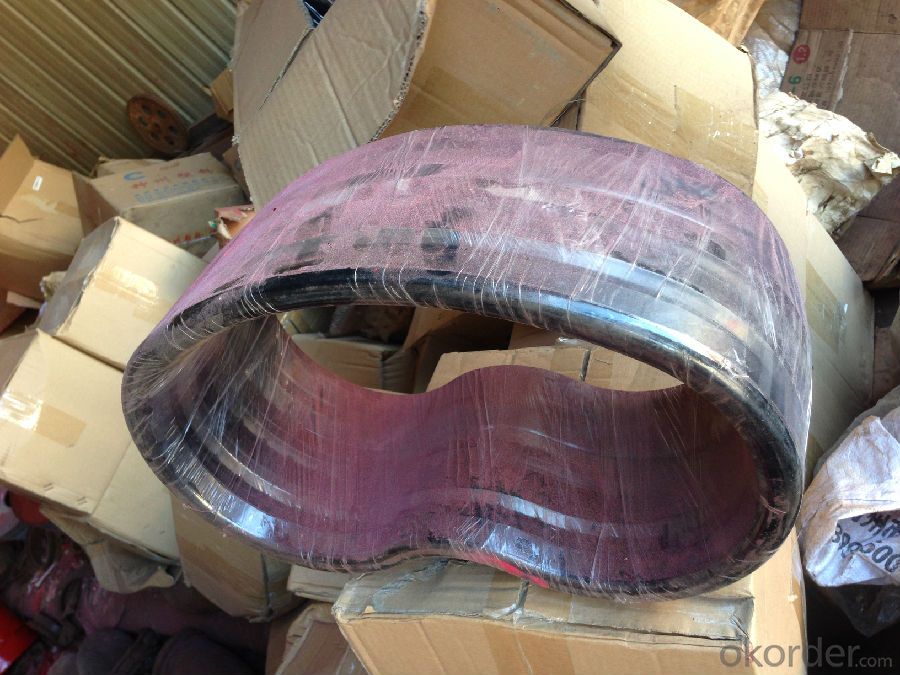

- Q: What are the potential risks of using non-standard or modified hydraulic components in concrete pump spare parts?
- There are several potential risks associated with using non-standard or modified hydraulic components in concrete pump spare parts. Firstly, these components may not have undergone the same rigorous testing and quality control as the original equipment manufacturer (OEM) parts. As a result, their performance and durability may be compromised, which can lead to potential failures or malfunctions. This, in turn, can cause accidents, injuries, or damage to the equipment or surrounding structures. Secondly, the use of non-standard or modified components may void the warranty of the concrete pump and its spare parts. Typically, manufacturers offer warranties to ensure the reliability and safety of their products. However, by using non-standard components, the warranty may become null and void. Consequently, the user will be responsible for any repairs or replacements needed due to issues arising from these non-standard parts. Another risk is the potential compatibility issues that may arise when using non-standard or modified components. Hydraulic systems rely on precise engineering and compatibility between various components to function optimally. Non-standard or modified parts may not fit properly or may have different specifications, resulting in leaks, pressure imbalances, or reduced overall performance. Furthermore, the use of non-standard or modified components can impact the overall efficiency and productivity of the concrete pump. OEM parts are specifically designed to work seamlessly with the rest of the system, ensuring smooth operation and maximum output. However, by using non-standard parts, the performance of the pump may be compromised, leading to increased downtime, decreased productivity, and higher maintenance costs. Lastly, the use of non-standard or modified components can also have legal and regulatory implications. Certain jurisdictions may have regulations or standards in place that require the use of OEM or certified parts for specific equipment, including concrete pumps. Failure to comply with these regulations can result in fines, penalties, or legal liabilities in the event of accidents or failures. In conclusion, the potential risks associated with using non-standard or modified hydraulic components in concrete pump spare parts include compromised performance and durability, warranty voidance, compatibility issues, reduced efficiency, and legal and regulatory implications. It is always advisable to use OEM or certified spare parts to ensure the safety, reliability, and optimal performance of the equipment.
- Q: How can one ensure compatibility between concrete pump spare parts and the pump?
- To ensure compatibility between concrete pump spare parts and the pump, it is essential to follow the manufacturer's guidelines and specifications. This includes sourcing spare parts from authorized dealers or reputable suppliers who specialize in concrete pump equipment. Additionally, maintaining a thorough understanding of the pump's model, make, and technical requirements can help in selecting the correct spare parts. Regular inspection and maintenance of the pump can also help identify any potential issues or parts that may need replacement, ensuring smooth compatibility between the pump and its spare parts.
- Q: Can I get spare parts for concrete pump hopper agitators and vibrators?
- Generally, spare parts for concrete pump hopper agitators and vibrators can be easily found. These components are readily available from various manufacturers and suppliers who specialize in construction equipment and machinery. To check for availability and pricing, it is advisable to reach out to the concrete pump manufacturer or their authorized dealer. Another option is to explore online platforms and marketplaces that offer a diverse selection of spare parts for construction equipment, including concrete pump components. To ensure compatibility and optimal performance, it is crucial to provide detailed information about the make and model of the concrete pump when purchasing spare parts.
- Q: What is the function of a concrete pump hopper filter?
- The function of a concrete pump hopper filter is to prevent large debris and foreign objects from entering the pump system, ensuring smooth and uninterrupted flow of concrete and protecting the pump from potential damage.
- Q: Are there any warranties or guarantees available for concrete pump spare parts?
- Yes, there are warranties and guarantees available for concrete pump spare parts. Many reputable manufacturers and suppliers offer warranties on their products, providing assurance of quality and performance. These warranties typically cover defects in materials or workmanship and may vary in duration and terms. It is advisable to inquire about the specific warranty or guarantee offered by the supplier before purchasing concrete pump spare parts.
- Q: How often should hopper cylinder seals be replaced in a concrete pump?
- Hopper cylinder seals in a concrete pump should be replaced as soon as signs of wear or damage are observed. Regular inspection and maintenance can help identify the need for replacement, but the frequency ultimately depends on factors like usage, environmental conditions, and the quality of the seals. It is recommended to follow the manufacturer's guidelines and consult with professionals to determine the appropriate replacement schedule for hopper cylinder seals in a concrete pump.
- Q: Can I get spare parts for both single-cylinder and multi-cylinder concrete pumps?
- Yes, spare parts are available for both single-cylinder and multi-cylinder concrete pumps.
- Q: How does the concrete pump work?
- The construction of automobile chassis, internal combustion engine, air compressor, water pump, hydraulic device, etc., which constitute the concrete pump truck, shall be operated in accordance with the safety instructions of the horizontal transport machinery, power plant and hydraulic machinery respectively
- Q: How does a concrete pump clamp work?
- An integral part of a concrete pump is the concrete pump clamp, which is utilized to securely fasten and stabilize the concrete delivery pipeline. Its function is to firmly grasp the pipeline, eliminating any potential movement or leakage throughout the concrete pumping procedure. Typically comprised of two primary components, the concrete pump clamp consists of the clamp body and the wedge. The clamp body, constructed from durable steel, possesses a curved structure tailored to the pipeline's shape. Equipped with bolts or knobs, it can be tightened or loosened to attach the clamp to the pipeline. In contrast, the wedge is a metal piece that is inserted into the clamp body. Its purpose is to apply pressure to the pipeline when the clamp is tightened. By manipulating the bolts or knobs, the wedge is pushed deeper into the clamp body, effectively squeezing the pipeline and establishing a secure grip. The secure grip achieved by the concrete pump clamp is essential as it guarantees a seamless and uninterrupted flow of concrete without any leaks or disruptions. It upholds a consistent and steady movement of concrete from the pump to the desired destination. Furthermore, the clamp contributes to the stability of the pipeline, preventing any shifting or displacement during the pumping process. In summary, the concrete pump clamp assumes a crucial role in the efficient and safe operation of a concrete pump. It ensures the secure placement of the concrete delivery pipeline, facilitating a smooth and uninterrupted concrete pumping process.
- Q: How can a malfunctioning control panel affect the pump's operation?
- A malfunctioning control panel can have various negative impacts on the operation of a pump. Firstly, the control panel is responsible for monitoring and controlling the pump's functions, such as starting, stopping, and regulating the flow of fluids. If the control panel malfunctions, it may fail to send accurate signals to the pump, leading to erratic or incorrect operation. Additionally, a malfunctioning control panel can result in a loss of communication between the pump and other components or systems. For instance, if the control panel fails to relay important information to the pump's sensors or other control devices, it may not be able to react appropriately to changes in pressure, temperature, or flow rate. This can lead to inefficient performance, potential damage to the pump, or even complete failure. Furthermore, a malfunctioning control panel may also impact the safety of the pump's operation. Control panels often incorporate safety features like emergency shutdowns or alarms to prevent hazardous situations. If these safety mechanisms are compromised due to a malfunction, it can increase the risk of accidents, equipment damage, or even harm to personnel. In summary, a malfunctioning control panel can disrupt the proper functioning of a pump by causing operational inconsistencies, loss of communication with other components, decreased efficiency, increased risk of accidents, and potential damage to the pump itself. Therefore, it is crucial to regularly inspect and maintain control panels to ensure their proper functioning and minimize the chances of any negative impact on the pump's operation.
Send your message to us
Spare Parts For Concrete Pumps Rubber Kidney Seal Dn180
- Loading Port:
- Tianjin
- Payment Terms:
- TT OR LC
- Min Order Qty:
- 10 pc
- Supply Capability:
- 10000 pc/month
OKorder Service Pledge
OKorder Financial Service
Similar products
Hot products
Hot Searches
Related keywords
